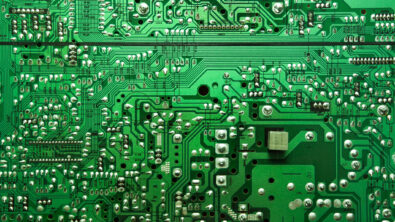Is it SSN or is it Crosstalk?
In the lab, both simultaneous switching noise (SSN) and crosstalk look the same. They appear as unwanted pulses of energy that line up with the (aggressor) signal edges. However, the mode of energy coupling is much different between SSN and crosstalk. In the case of crosstalk, they are lining up with the edges because the signal edges are coupling energy onto the victim signal through electric (and magnetic) fields. This occurs from one trace to another, and increases the closer those traces are. SSN, however, couples noise through the power distribution network (PDN). If the impedance of the board PDN is too high at the IC power pins, the switching current of the I/O buffers will induce a voltage onto the other I/O lines. And because these current demands occur as the signals are switching, the resulting SSN appears as a pulse that lines up with the signal edges.
How can these two phenomena be distinguished? Well, in the lab, you could try to toggle only the nearest two bits to the victim signal. Most of the crosstalk on a single layer will come from the nearest two aggressors. And with only two bits toggling, if the problem is indeed SSN, there should be a significant reduction in the coupled noise. The easier solution, however, is to run SI and PI simulations during the design phase to ensure such problems are avoided in the first place.
To learn more about various sources of noise coupling in your PCB designs, and how to prevent them, take a look at this article:
http://pcdandf.com/cms/component/content/article/171-current-issue/8973-designers-notebook


